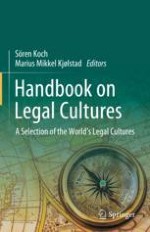2023 | OriginalPaper | Chapter
An Introduction to Estonian Legal Culture
Authors : Merike Ristikivi, Andreas Kangur, Irene Kull, Katre Luhamaa, Marin Sedman, Hesi Siimets-Gross, Age Värv
Published in: Handbook on Legal Cultures
Publisher: Springer International Publishing
Activate our intelligent search to find suitable subject content or patents.
Select sections of text to find matching patents with Artificial Intelligence. powered by
Select sections of text to find additional relevant content using AI-assisted search. powered by
